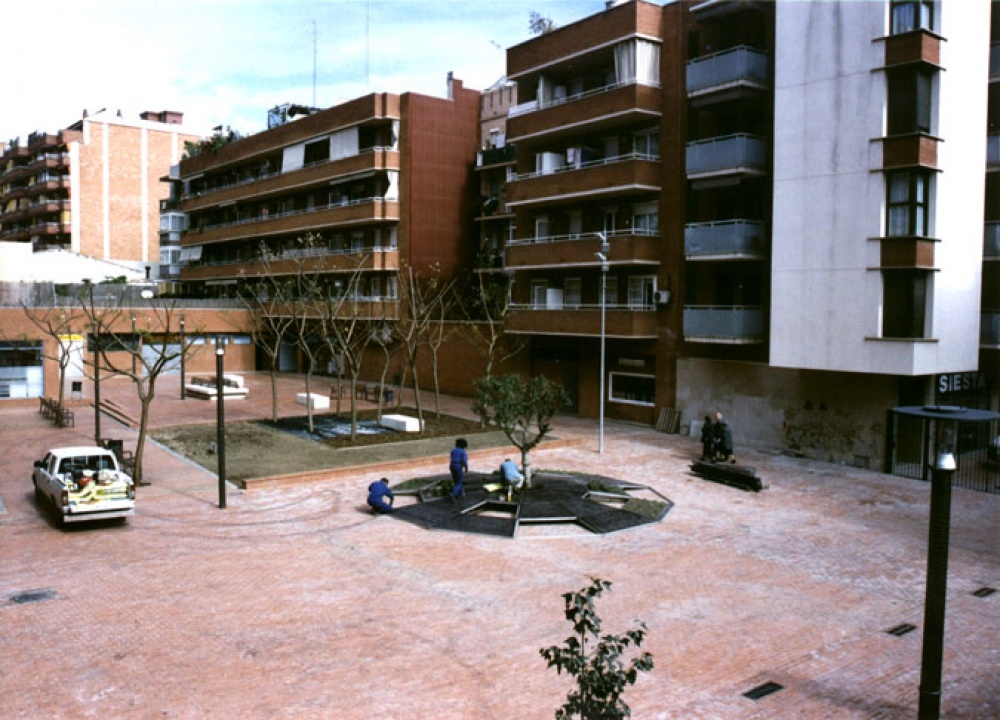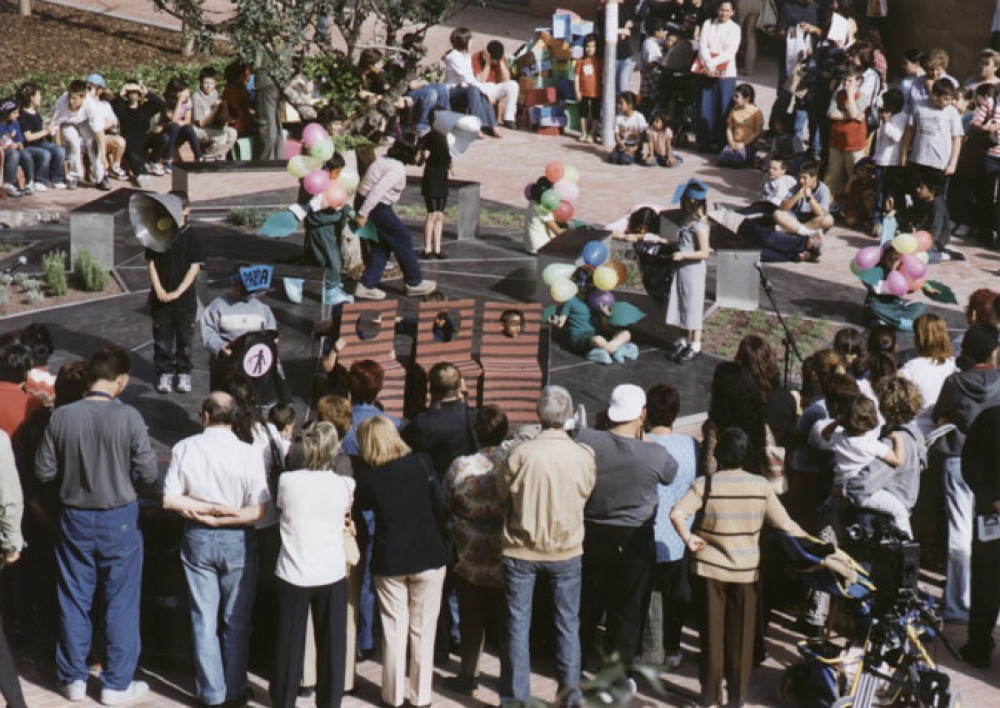


The project began with the 4th, 5th, and 6th grade primary school groups. Each student was asked to identify a relevant place in the neighborhood from a biographical perspective and write a short text. The identified places were arranged on a map of the neighborhood, and various routes were drawn to visit them. During the route, the students took photographs and made drawings of the places.
Once back in the classroom, the children were asked to analyze the visited places through images and words in order to create visual poems that would serve as a conceptual basis for the design of an urban element, halfway between a piece of furniture and a public space, which we call ‘platforms,’ designed to be installed in the chosen place. Based on a clay tablet of approximately 25x25x5 cm, each student built a model of their platform.
This first phase of work concluded with an exhibition at the Centre de Cultura de Santa Eulàlia, in which the entire work process and the resulting models were shown.
A poster was created for each student that incorporated the text written initially, a photograph of the place they had selected, and an image of the model designed for that place. These posters were distributed throughout the neighborhood days before the opening of the exhibition without any indication of their origin or purpose.
The platforms designed by the students had in common that they were delimited spaces that could be accessed and in which one could be. Their programs were poetic and specialized at the same time: Platform to feed the birds, Platform to shout when they score a goal, Platform to fall and not get hurt, Platform to collect the paycheck, are just some of the examples of the nearly 70 platforms proposed.
The good reception of the first phase of the project’s development opened the possibility of actually building one of these platforms in the neighborhood; so the second year, a collective work was proposed among all the students to collaboratively design a single platform that would bring together conceptual characteristics of all of them. It was decided to create three working groups: a Conceptual Group, a Formal Group, and a Communication Group, which the 5th and 6th grade students joined according to their interests and not separated by grades.
Each group had as its starting point the work done the previous year; it was about grouping and extracting the common points of the individual platform proposals to arrive at a synthesis.
Each step of the conceptual and formal groups reached the rest of the school through a space in the reception area designed by the communication group where contributions, criticisms, and suggestions could be made about the work carried out, as well as participating in the votes to decide between the different platform proposals that were designed.
The resulting platform was the Platform for all lives to be happily fantastic.
Thanks to the mediation of the Centre Cultural de Santa Eulàlia and the Regidoria of the neighborhood, the City Council of L’Hospitalet provided a budget for this proposal to be built, and during the 2002/2003 school year, the municipal architect Sergi López-Grado made the appropriate modifications so that the platform complied with the required technical regulations, always in consultation with the children, who visited the workshop where the platform was being built, which was finally inaugurated in June 2003 in front of the Centre de Cultura de Santa Eulàlia where it remained until 2022, when it was dismantled without prior notice by the City Council of l’Hospitalet citing public health reasons.


To mark the inauguration of the Platform, the project diary llocs was published, which you can consult below. In it you will find unpublished texts signed by the pedagogical team of the CEIP Prat de la Manta, the children of the school, the independent curator David Armengol and the anthropologist Manuel Delgado, and also a wonderful comic strip by our friend, the screenwriter and comic book artist Marcos Prior. The two central pages of the diary included an empty map, without the names of the streets of the Santa Eulàlia neighborhood, in which those attending the inauguration were invited to draw their particular route through the city to the platform; the personalized maps were exhibited in the exterior window of the cultural center forming a huge collective mural. The text by Manuel Delgado that accompanies the map speaks precisely of the passer-by, of the one who comes from one place and has not yet arrived at another, with the suspicion that, in reality, he lacks a place.